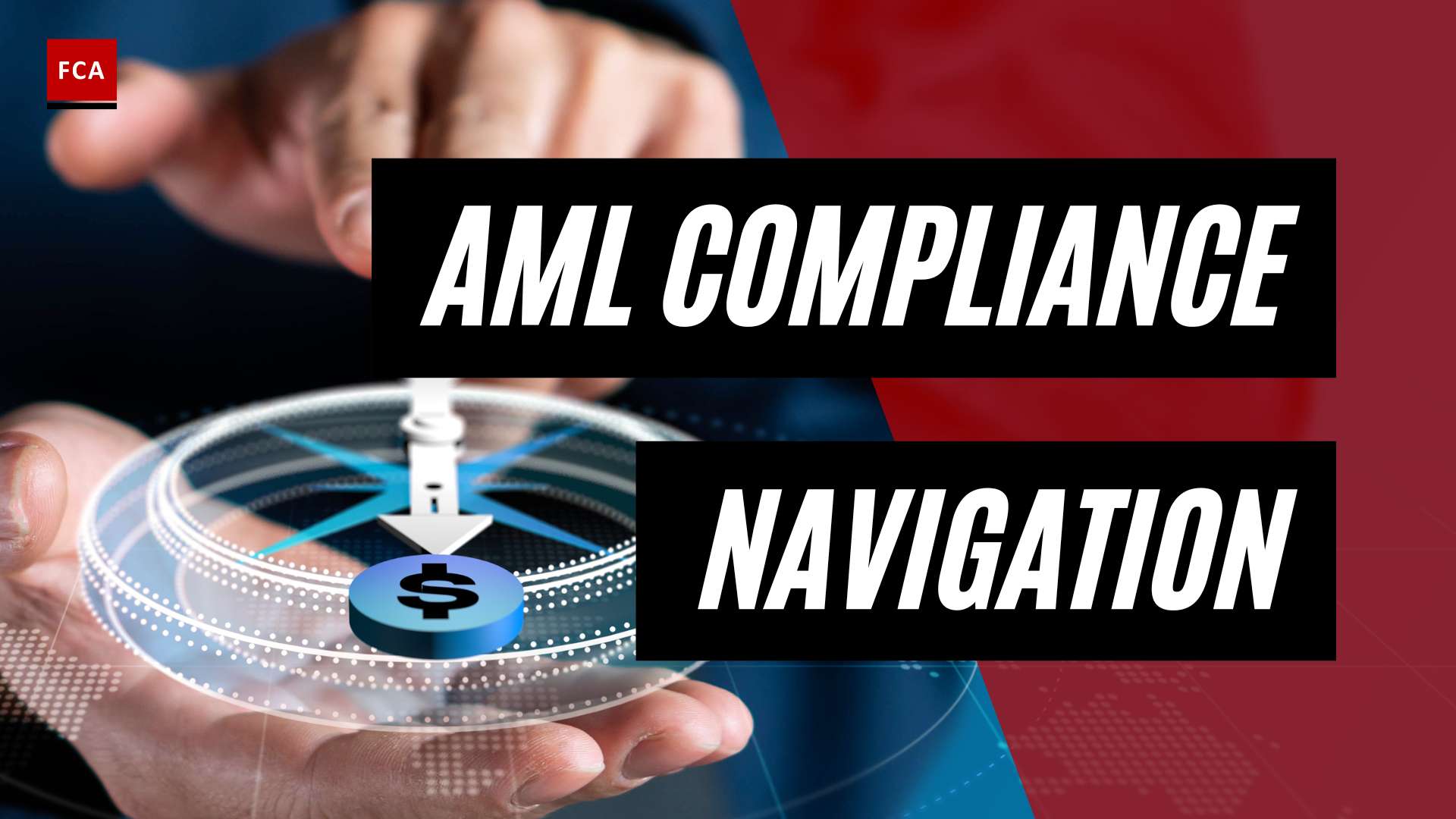ESG Integration in AML
In recent years, the integration of Environmental, Social, and Governance (ESG) considerations into Anti-Money Laundering (AML) practices has gained significant attention and importance. The intersection of ESG and AML brings forth a range of benefits and considerations that financial institutions and organizations need to understand and address. Let’s explore the intersection of ESG and AML and the importance of ESG reporting in AML compliance.
The Intersection of ESG and AML
ESG regulations are expanding into the risk and compliance field, signifying a shift towards integrating ESG considerations within AML practices. The aim is to address not only financial risks but also environmental, social, and governance risks that organizations may face (Thomson Reuters). Money laundering often involves activities that violate human rights, contribute to environmental destruction, and facilitate corruption, thus highlighting the need for ESG integration in AML practices.
Importance of ESG Reporting in AML
ESG reporting has become essential for financial institutions to contribute to the wider societal agenda. It helps companies demonstrate their commitment to sustainable and responsible business practices. AML compliance plays a crucial role in ESG reporting as money laundering activities can have severe social and environmental impacts. By incorporating ESG criteria into AML operations, companies can enhance their risk management strategies, improve stakeholder trust, and align with investor expectations (Schellman).
ESG reporting in AML compliance ensures that organizations address the environmental and social risks associated with money laundering activities. It enables companies to mitigate reputational, legal, and financial risks by adhering to ESG principles and promoting sustainable business practices (sanctions.io). By integrating ESG factors into compliance programs, companies can better assess risk, build resilience, and respond to regulatory changes more effectively. ESG reporting not only helps organizations stay ahead of regulatory requirements but also strengthens their reputation and drives positive social and environmental impact.
As financial institutions navigate the evolving landscape of AML compliance, it is crucial to evaluate ESG metrics and risks, monitor for ESG-related risks, and align operations with investor expectations. The integration of ESG principles in AML programs offers businesses an opportunity to enhance their compliance efforts, drive sustainability, and foster long-term growth (Schellman). By embracing ESG reporting in AML compliance, organizations can contribute to a resilient and sustainable financial ecosystem while adhering to ethical, efficient, and commercial imperatives (Thomson Reuters).
ESG Risks in AML
In the context of Anti-Money Laundering (AML) compliance, it is important to recognize the risks associated with Environmental, Social, and Governance (ESG) factors. ESG risks can have a significant impact on financial crime prevention and regulatory compliance efforts. This section explores three main categories of ESG risks in AML: environmental crimes, social issues, and governance-related crimes.
Environmental Crimes and AML
Environmental crimes, such as illegal logging, mining, and waste trafficking, not only harm the environment but also generate substantial unlawful gains. According to the Financial Action Task Force (FATF), these crimes are considered predicate offenses for money laundering. The intermingling of legal and illegally-obtained assets across complex supply chains presents a challenge for cross-border enforcement and tracking of these offenses. Environmental crimes attract increased regulatory attention due to their financial implications and potential links to money laundering.
Social Issues and AML
Social issues, including corruption and human rights violations, are closely intertwined with money laundering activities. Corruption, which costs the global economy trillions of dollars annually, poses a significant financial risk in the context of ESG and financial crime (sanctions.io). Money laundering schemes often involve the proceeds of corruption, leading to reputational, legal, and financial risks for companies. AML compliance plays a crucial role in addressing these social issues and preventing the illicit flow of funds associated with them.
Governance-related Crimes and AML
Governance-related crimes, such as fraud, embezzlement, and insider trading, have significant financial implications in the context of both ESG and financial crime. These crimes can undermine the integrity of financial systems and create risks for businesses, investors, and society as a whole. Regulatory authorities are increasingly focusing on governance-related offenses and their potential connection to money laundering activities. Robust AML measures are crucial for detecting and preventing governance-related crimes, ensuring transparency, and maintaining trust in the financial ecosystem.
Understanding and addressing ESG risks in AML is essential for effective risk management and regulatory compliance. By integrating ESG considerations into AML frameworks, financial institutions can enhance their ability to detect and prevent money laundering activities associated with environmental crimes, social issues, and governance-related offenses. This integration contributes to a more sustainable and resilient financial system, aligning with evolving regulatory standards and meeting investor expectations for ethical and responsible business practices.
Benefits of ESG Integration in AML
As the integration of ESG (Environmental, Social, and Governance) principles in AML (Anti-Money Laundering) programs becomes increasingly important, financial institutions and organizations can reap several benefits. These benefits include enhanced risk assessments, strengthened reputation and trust, and the promotion of sustainable business practices.
Enhanced Risk Assessments
Integrating ESG considerations into AML frameworks allows financial institutions to conduct more comprehensive risk assessments. By analyzing environmental, social, and governance factors alongside traditional AML risk indicators, institutions gain a deeper understanding of their clients and transactions. This enables them to identify potential risks associated with money laundering and other financial crimes more effectively. The inclusion of ESG metrics in risk assessments can help identify emerging risks, prioritize mitigation efforts, and improve overall risk management.
Strengthened Reputation and Trust
Incorporating ESG reporting into AML compliance efforts demonstrates a commitment to sustainability, ethics, and transparency. By aligning AML processes with ESG considerations, financial institutions can showcase their dedication to responsible business practices. This alignment helps strengthen their reputation and build trust with stakeholders, including investors, customers, and regulators. It also signals a commitment to addressing wider societal concerns and promotes a positive image in the market.
Sustainable Business Practices
The integration of ESG principles into AML compliance fosters sustainable business practices. By considering environmental, social, and governance factors, financial institutions can align their operations with broader sustainability goals. This includes implementing measures to reduce their environmental impact, promoting social responsibility, and enhancing corporate governance practices. The integration of AML and ESG frameworks encourages organizations to develop sustainable strategies that balance profitability with long-term environmental and societal considerations. This approach promotes the creation of resilient and sustainable financial ecosystems.
By integrating ESG principles into AML compliance efforts, financial institutions can enhance risk assessments, build a stronger reputation, and promote sustainable business practices. The combination of these benefits facilitates effective risk management, aligns organizations with investor expectations, and contributes to the overall growth and resilience of the financial industry. As regulatory standards continue to evolve, financial institutions should prioritize ESG integration in their AML frameworks to stay ahead of emerging requirements and drive positive change.
Integrating AML and ESG Frameworks
To effectively address emerging trends and promote sustainable financial practices, the integration of Anti-Money Laundering (AML) and Environmental, Social, and Governance (ESG) frameworks has become increasingly important. This integration requires a comprehensive approach that encompasses various aspects, including risk management, data management and analytics, and regulatory clarity.
Comprehensive Risk Management Strategy
A comprehensive risk management strategy is a crucial component of integrating AML and ESG frameworks. Financial institutions need to identify and assess risks associated with both money laundering and ESG factors. By evaluating these risks collectively, institutions can prioritize their efforts, allocate resources effectively, and align their compliance programs accordingly.
A strong ESG risk management framework is pivotal in identifying risks, setting priorities, and deploying resources effectively. It enables financial institutions to address environmental crimes, social issues, and governance-related crimes in conjunction with their AML efforts. This integrated approach enhances the institution’s ability to detect and mitigate risks, leading to a more robust compliance program.
Effective Data Management and Analytics
As AML and ESG reporting continue to evolve, effective data management and analytics play a critical role in addressing emerging risks and reporting requirements. Financial institutions must establish mechanisms to collect, analyze, and interpret relevant data related to both AML and ESG factors.
By leveraging data management systems and advanced analytics tools, institutions can identify patterns, trends, and potential risks associated with money laundering and ESG factors. This enables them to make informed decisions, enhance their risk assessment processes, and strengthen their overall compliance efforts.
Regulatory Clarity and Reporting Requirements
Regulatory clarity is essential for promoting the convergence of AML and ESG reporting. Financial institutions require clear guidelines on the integration and reporting requirements for ESG-related aspects within their AML frameworks. Regulatory authorities play a vital role in providing explicit guidance on how financial institutions should incorporate ESG considerations into their AML compliance programs.
Clear reporting requirements help financial institutions align their AML and ESG reporting processes, ensuring transparency and consistency in their compliance efforts. This alignment showcases an organization’s commitment to financial integrity and ethical responsibility. By complying with regulatory requirements, institutions can minimize complexities, penalties, and reputational risks associated with non-compliance.
Integrating AML and ESG frameworks requires a holistic approach that encompasses comprehensive risk management strategies, effective data management and analytics, and regulatory clarity. By embracing this integration, financial institutions can foster sustainable business practices, enhance risk assessments, strengthen their reputation and trust, and align with evolving investor expectations. As regulatory standards continue to evolve, financial institutions need to adapt and prioritize the integration of AML and ESG frameworks to promote a resilient and sustainable financial ecosystem.
ESG in AML Compliance
In the realm of Anti-Money Laundering (AML) compliance, incorporating Environmental, Social, and Governance (ESG) considerations has become increasingly important. This section examines the various aspects of ESG integration in AML and how it contributes to overall compliance efforts.
Evaluating ESG Metrics and Risks
In the context of AML compliance, evaluating ESG metrics and risks is crucial for organizations. AML monitoring can help identify ESG risks within firms, ensuring compliance with legislation related to issues such as pollution, corruption, human rights, and child labor (HLB Global). By assessing these metrics and risks, companies can proactively address potential issues and mitigate the associated financial, legal, and reputational risks.
AML Monitoring for ESG Risk Identification
Integrating AML monitoring into ESG programs allows businesses to effectively identify and manage risks associated with money laundering and financial crimes. This integration enhances overall ESG performance and reputation, as it demonstrates a commitment to compliance and responsible business practices. AML monitoring plays a significant role in detecting and preventing illicit financial activities that may be linked to environmental crimes, social issues, and governance-related offenses.
Aligning with Investor Expectations
ESG criteria have become essential for investors and stakeholders when evaluating a company’s social, environmental, and financial performance. Ensuring compliance with AML regulations is crucial for maintaining trust and transparency, as investors increasingly consider a company’s commitment to combating money laundering and financial crimes as part of their ESG evaluation. Aligning with investor expectations by integrating AML compliance into ESG reporting enhances sustainability efforts, strengthens operational resilience, reduces financial crime risks, and improves overall ESG performance.
The integration of ESG considerations into AML compliance not only promotes sustainable business practices but also helps organizations mitigate various risks. By evaluating ESG metrics and risks, conducting AML monitoring for ESG risk identification, and aligning with investor expectations, companies can demonstrate their commitment to ESG principles while ensuring compliance with AML regulations. This comprehensive approach enhances transparency, trust, and responsible business conduct in the financial ecosystem.
AML’s Role in ESG Reporting
As AML compliance continues to evolve, it plays a crucial role in the integration of ESG (Environmental, Social, and Governance) reporting. AML practices are essential for companies striving to maintain financial integrity, effective resource management, and the adoption of technology solutions to address both AML and ESG requirements.
Compliance with Financial Integrity
AML compliance is a critical component of ESG reporting because money laundering often involves the violation of human rights, environmental destruction, corruption, and other social issues. By ensuring AML compliance, companies can contribute to mitigating these risks and uphold financial integrity (HLB Global). Compliance with AML regulations helps prevent illicit funds from being used in activities that harm the environment, exploit human rights, or support governance-related crimes.
Effective AML Resource Management
Effective resource management in AML operations is vital for addressing ESG risks. A well-structured AML program ensures that sufficient resources, including personnel, technology, and financial investments, are allocated to combat money laundering and illicit activities. By dedicating resources to AML, companies can demonstrate their commitment to ESG principles and align their operations with sustainable business practices.
Technology Solutions for AML and ESG
Technology plays a significant role in both AML and ESG reporting. Companies can leverage technology solutions to enhance their AML capabilities, such as transaction monitoring systems, identity verification tools, and data analytics platforms. These technologies not only help identify potential money laundering activities but also contribute to the identification and assessment of ESG risks within firms.
Integrating technology solutions that facilitate the monitoring of financial transactions and the analysis of ESG metrics enables companies to effectively manage and report on both AML and ESG requirements. By leveraging these technologies, companies can align their AML efforts with ESG reporting, promoting transparency, risk mitigation, and sustainable business practices.
By recognizing the intersection of AML and ESG, companies can enhance their risk management strategies, strengthen their reputation and trust, and cultivate sustainable business practices. The integration of AML and ESG frameworks is crucial for comprehensive risk management, effective data management and analytics, and compliance with regulatory reporting requirements.
As regulatory standards continue to evolve, the future of AML and ESG integration holds the promise of a resilient and sustainable financial ecosystem. By focusing on ethics, efficiency, and commercial imperatives, companies can navigate the complex landscape of AML and ESG reporting, driving positive social and environmental impact while ensuring compliance and fostering long-term growth.
The Future of AML and ESG Integration
As the landscape of Anti-Money Laundering (AML) compliance evolves, the integration of Environmental, Social, and Governance (ESG) reporting is becoming increasingly important. Looking ahead, several key trends and considerations are shaping the future of AML and ESG integration.
Evolving Regulatory Standards
Regulatory clarity will play a crucial role in promoting the convergence of AML and ESG reporting. Financial institutions require clear guidelines on the integration and reporting requirements for ESG-related aspects in AML frameworks. For instance, the inclusion of environmental crimes and cybercrime in the sixth EU Anti-Money Laundering Directive (AMLD6) broadens the list of predicate offenses, necessitating an expanded AML framework that encompasses anti-corruption, anti-fraud procedures, and ESG-related risks.
Resilient and Sustainable Financial Ecosystem
By incorporating anti-corruption, anti-fraud procedures, and meticulous ESG considerations, financial institutions can foster a resilient and sustainable financial ecosystem. This integration allows organizations to adopt a comprehensive risk management strategy by considering financial, legal, environmental, and social dimensions, providing a 360-degree view of potential risks and opportunities (LinkedIn). Integrated reporting, aligning with regulatory requirements from AML and ESG, showcases an organization’s commitment to financial integrity and ethical responsibility, ensuring compliance while minimizing complexities and penalties.
Ethics, Efficiency, and Commercial Imperatives
Integrating AML and ESG compliance enables businesses to achieve substantial and sustainable operational efficiencies while meeting the increasing demands for responsible and sustainable business practices. This integration aligns with balancing ethical considerations and commercial imperatives in the current economic environment. ESG has emerged as a crucial framework for comprehensive risk and ethics management, allowing businesses to align with customer values, avoid reputational damage, deliver sustainable financial results, and be held accountable. This broader and more measurable approach encompasses environmental, social, and governance factors.
As the future unfolds, the integration of AML and ESG frameworks will continue to shape the compliance landscape. Financial institutions will need to assess and mitigate ESG risks, enhance data management and analytics capabilities, and align with evolving regulatory standards to ensure a resilient, sustainable, and ethically responsible approach to AML and ESG integration.









